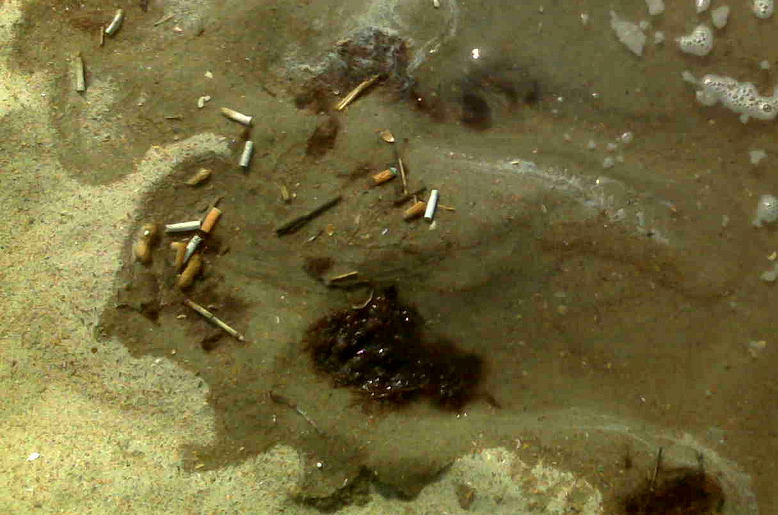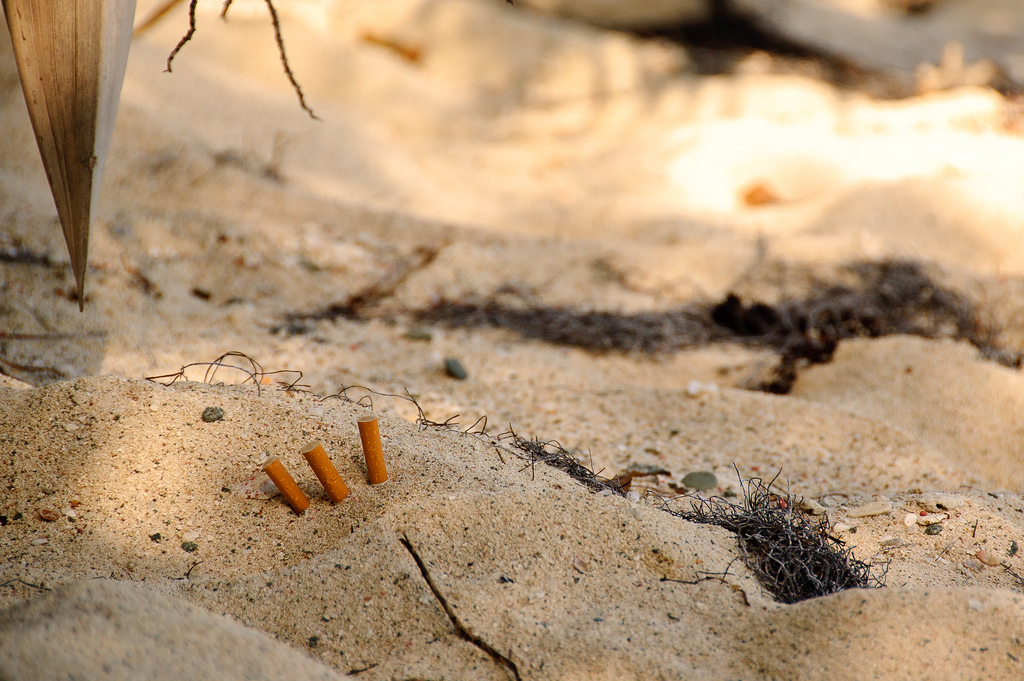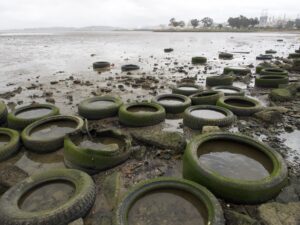Save the Bay estimates that each year, over three billion cigarette butts are littered in the Bay Area. Tossed onto the road or flicked onto the sidewalk, they will eventually make their way into our creeks and waterways, ending their journey in the Bay. While cities and counties have begun tackling the problem of single-use plastic bags, cigarette butt litter remains a pervasive problem.
“Three billion is really a staggering number of cigarette butts that are littered every year,” said Allison Chan who manages Save The Bay’s pollution prevention program. “And they’re not just your average litter—they’re toxic, plastic litter.”
The white interior of a cigarette filter is not derived from natural fibers, as many suspect, but is made from cellulose acetate—a non-biodegradable plastic. A filter can take over 18 months break down, during which time it poses a significant threat to wildlife.
“Those filters can look a lot like food,” Chan said. “So it’s a real concern for wildlife health.”
The toxicity of cigarette litter comes from the chemical compounds nicotine and ethylphenol, which are found in leftover, smoked tobacco. A 2009 study found that when cigarette butts were allowed to soak in fresh and saltwater at a concentration of one butt per liter, half of the fish exposed to the water died. Cigarette butts are consistently the number one item of trash collected on Coastal Cleanup Day, Chan said, making the toxic risk they pose a real concern.
Part of the difficulty, Chan suggested, is the perception of cigarette butts: small and often individually thrown aside, they have become a permanent decoration on sidewalks and shorelines so much so that many have forgotten they are actually trash.
“I do think it’s a challenge compared to something like a plastic bag where the average person will know that if you throw a plastic bag on the ground that’s littering,” she said. “In terms of the behavioral side of smoking, it’s such an ingrained behavior for many smokers to flick their butts that it may be more of a challenge to really bring that awareness.”

In 2012, the city of San Rafael passed an ordinance that prohibits stationary smoking on sidewalks, pedestrian areas and public places within a specific area of downtown. In late May this year, the San Rafael Clean Coalition installed the “cigarette eater meter” where smokers can place their butts. Part art installation, part fundraiser, the meter aims to decrease street litter while at the same time donating one cent to St. Vincent de Paul Society for each cigarette deposited. Last month, 100,000 cigarette butts had been collected in the meter.
“The important takeaway is that they’re highlighting cigarette butts as a particular kind of litter that needs to be kept off the streets,” Chan said. “It’s a really strong step forward in addressing the issue.”
As cities implement programs to keep streets and waterways clean, the next question arises: who foots the bill? San Francisco estimates the cost to the city of cleaning up tobacco litter alone is around $6 million per year. Tobacco companies, unlike electronics or tire manufacturers, are not required to take responsibility for the disposal of their products, Chan said. And Save the Bay has launched a petition urging tobacco companies to change.
“I think this is a really important part of addressing a toxic pollutant,” she said. “Because even when you compare it to all the other types of trash out there, it’s staggering just how much there is and how taxpayers are footing the bill for the end of life of a harmful product.”
For more information visit Save the Bay’s Clean Bay Project.




